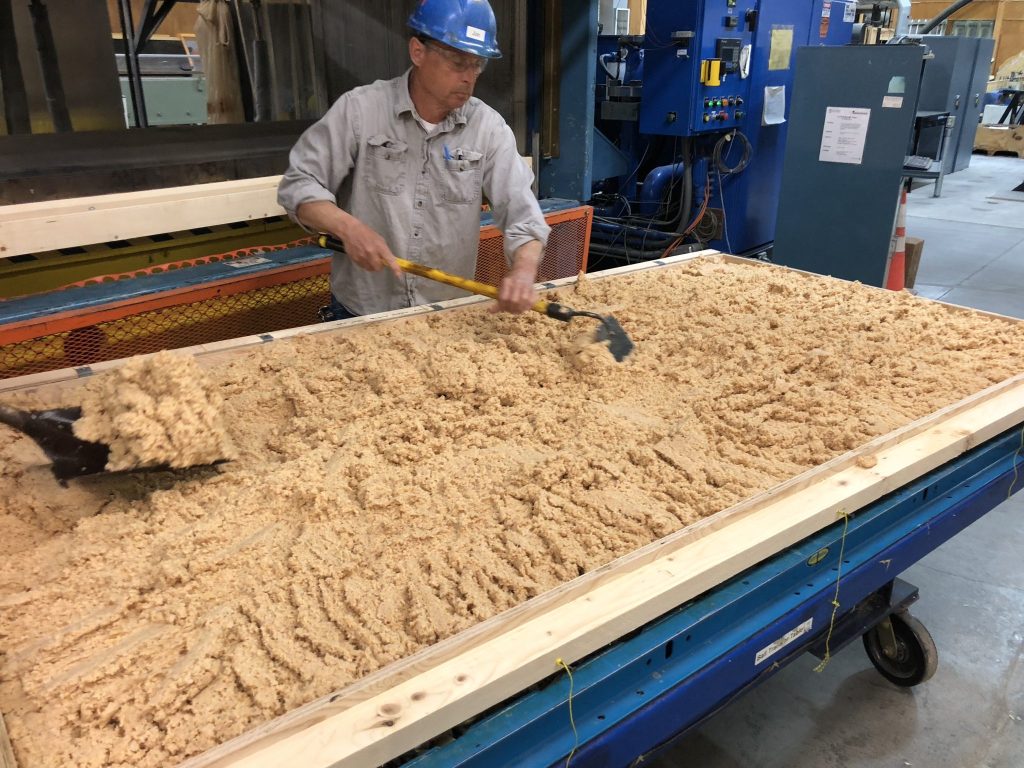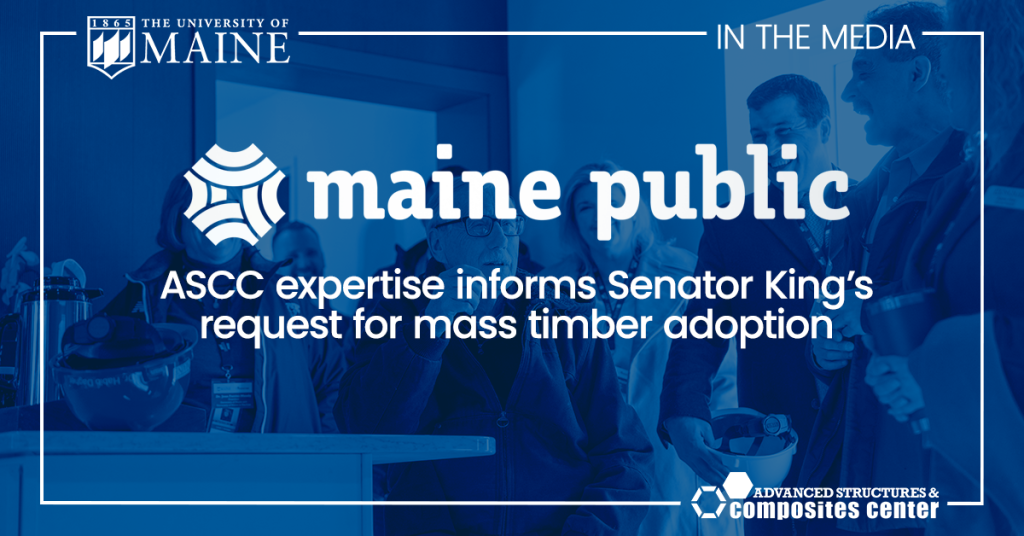CASE STUDY
Particleboard is a wood composite panel typically manufactured from discrete wood particles combined with a resin or binder, which is treated under heat and pressure to form the finished product. The resins used in particleboards are mostly made up of formaldehyde-based adhesives, such as urea-formaldehyde.
The largest-ever particleboard panel made with cellulose nanofibrils (CNF) was made at the ASCC. The CNF was used as a total replacement of the urea-formaldehyde adhesive conventionally used in the formation of particleboards.
The process started with mixing a wet slurry of CNF with dry wood particles. The wet mix was then dewatered mechanically using a process called contact dewatering. The dewatered mat was then hot pressed to remove the remaining water and solidify the panel. The resulting product was 100% formaldehyde-free product completely manufactured with wood and associated bi-product.







